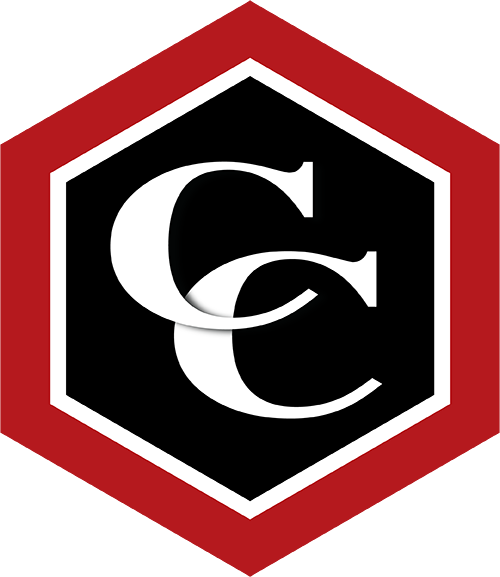Members of the Carbine Club are bonded by a couple of simple but very significant affections: for sport and for good fellowship. It has always been that way.
It is a fact that the two men who fathered the idea of the Club, and the other 16 men who made up the foundation membership, never envisaged that a sports-oriented luncheon club would develop as it did.
In mid -1961, Rig Davies and Frank Williams, two executive members of Melbourne's Sportsmen's Association, after attending an 'Unbearables' luncheon at Molinas Restaurant in Bourke Street, felt it would be a good idea to form a small luncheon club but without the ribaldry of the luncheon they had just left.
At their informal sportsmen's luncheon on the following Friday at the Hotel Australia (then in Collins Street), Rig listed eight names associated with him in his capacity as an executive of an advertising agency. Frank provided a similar list connected with him in sport and business, all of whom they felt would participate. In fact, they did.
The next question was what the proposed club should be called.
Rig had just completed with Maurie Cavanough a lengthy co-authorship of the 'Centenary of the Melbourne Cup' and understandably, the names of the Cup winners were foremost in his mind, Frank and Rig agreed that as Carbine was arguably the best Cup winner, matching the qualities they had for the Club, The Carbine Club was the name. Further, Carbine did not appear to be strictly horse-racing.
In subsequent discussion on the format of Club functions, one of the invited persons, Trevor Craddock, suggested that instead of having guest speakers the Club should have Guests of Honour who would not be put to the trouble of preparing speeches, but instead would simply answer questions from members and guests. This would be on the basis that everything said was 'in club'. This was accepted as was his further suggestion that by restricting membership to 30 members over time it could become a much sought after membership. Also, it would be more intimate and easier to manage.
Exceptions subsequently were made to the answering of questions for the Derby Eve and Grand Final Football Luncheons, in 1966 the membership ceiling was lifted to 40.
Rig Davies was anxious that the first luncheon Guest of Honour should set a high standard. Thus, Ross Grey-Smith, deputy Chairman of the V.R.C with whom he had dealings as advertising agent, was invited to break the ice. Grey-Smith, later Sir Ross, at first somewhat diffident subsequently agreed. Whether this was after Harry Hopman had talked the new Governor, Sir Rohan Delacombe into accepting Honorary Membership or not, is not clear.
Sir Rohan, as a matter of interest, had taken up his appointment from the position of Commandant of the British Sector of the Four-Power administration of Berlin post-war and where one of his duties each month was to personally visit Adolf Hitler's deputy, Rudolf Hess, serving life in Spandau Prison in Berlin.
Before any membership meeting, in true democratic fashion, Rig had elected Frank as President and Frank made Rig the inaugural Honorary Secretary. However, Frank delegated Chairmanship of the first luncheon to Rig. And so it was that for the first two years, the Chairmanship of luncheons was shared among members.
The succession of extraordinary occasions relative to Club luncheons began almost immediately when, in April 1962, the Guest of Honour was Ron Flockhart, known as the 'Flying Scotsman' and one of the leading racing car drivers in the world. Ron spoke most entertainingly at our luncheon on the Friday before beginning a lifelong ambition to attempt the Melbourne-UK record in a restored Mustang fighter plane. On the following Monday, Ron set off in his attempt to break the 36-hour record for the 12,000 mile flight, and less than 30 minutes after leaving Melbourne crashed into the Dandenong Ranges northeast of the City and was killed.
Not so long after, several of the members put their own not-so-young lives at risk, when they agreed to participate in a walking race from Geelong to Port Lonsdale to raise money for popular bookmaker/member Leo Kennedy's favourite charity.
Rig Davies, a one-time walker, fancied himself and gave the others a big start. Frank Williams trained hard for several months and appropriately won the walk, while Harry Hopman, Colin McDonald and Laurie Smith suffered the blistering agony of such an experience tempered only by a post-race barbecue and convivial ale.
In November 1962, doubly intent on maintaining the high standard, Australian Test opener Colin McDonald prevailed upon the leader of the visiting English cricket team, the Duke of Norfolk, premier Duke of England, to be our Guest of Honour. His Grace was magnificent.
The next historic event was the inaugural Derby Eve luncheon in November 1963. Davies with his upper class English background perceived that the Victoria Derby, as in England, was the most prestigious of racing occasions. It was entirely appropriate; therefore, that The Carbine Club should honour it with a luncheon of Vice-Regal dimensions. The Governor agreed and once this became known at the VRC, the V.R.C Committee gave unanimous approval. And so a tradition was born.
In 1988 a Carbine Club branch was established in Western Australia
